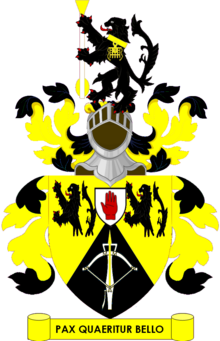
Lord Polwarth, of Polwarth in the County of Berwick, is a title in the Peerage of Scotland. It was created in 1690 for Sir Patrick Hume of Polwarth, 2nd Baronet, Lord Chancellor of Scotland from 1696 to 1702. In 1697 he was further created Lord Polwarth, of Polwarth, Redbraes and Greenlaw, Viscount of Blasonberrie and Earl of Marchmont, also in the Peerage of Scotland. Upon the death of his grandson, the third Earl, the creations of 1697 became dormant (unclaimed).
There have been three baronetcies created for members of the Anstruther family, two in the Baronetage of Nova Scotia and one in the Baronetage of Great Britain. Two of the creations are extant while one is extinct.
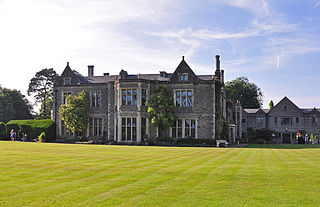
The Williams, later Rhys-Williams Baronetcy, of Miskin in the Parish of Llantrisant in the County of Glamorgan, is a title in the Baronetage of the United Kingdom. It was created in 1918 for Rhys Williams, Member of Parliament for Banbury from 1918 to 1922. He assumed in 1938 by deed poll the additional surname of Rhys. The second Baronet was a Conservative politician. As of 2014 the title is held by the latter's son, the third Baronet, who succeeded in 1988.

The Purves, later Purves-Hume-Campbell, later Home-Purves-Hume-Campbell Baronetcy, of Purves Hall in the County of Berwick, was a title in the Baronetage of Nova Scotia. It was created on 25 July 1665 for William Purves. The fourth Baronet married Lady Anne, daughter of Alexander Hume-Campbell, 2nd Earl of Marchmont. Their grandson, the sixth Baronet, assumed the additional surnames of Hume and Campbell. The latter's son, the seventh Baronet, assumed the additional surname of Home. He sat as Member of Parliament for Berwickshire. The title became either extinct or dormant on the death of the eighth Baronet in 1960.
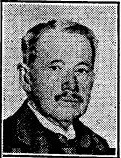
There have been three baronetcies created for people with the surname Benn, all in the Baronetage of the United Kingdom. As of 2014 one creation is extant.
There have been four baronetcies created for members of the Harmsworth family, all in the Baronetage of the United Kingdom. All recipients were brothers.
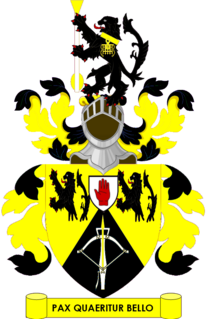
Sir Ellis William Hume-Williams, 1st Baronet KBE, PC, KC was a British barrister and Conservative Party politician.
The Ryan Baronetcy, of Hintlesham in the County of Suffolk, is a title in the Baronetage of the United Kingdom. It was created on 8 September 1919 for Gerald Ryan, later General Manager and Chairman of Phoenix Insurance Co.
There have been two baronetcies created for persons with the surname Cave, one in the Baronetage of England and one in the Baronetage of the United Kingdom. Both creations are extant as of 2008.
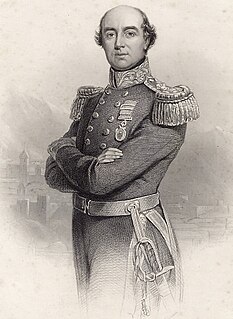
There have been twenty baronetcies created for persons with the surname Williams, eight in the Baronetage of England, three in the Baronetage of Great Britain and nine in the Baronetage of the United Kingdom. Only five of the creations are extant as of 2017..
The Williams, later Williams-Bulkeley Baronetcy, of Penrhyn in the County of Caernarvon, is a title in the Baronetage of England. It was created on 17 June 1661 for Griffith Williams. He had already been granted a baronetcy by Oliver Cromwell in 1658. The second Baronet represented both Caernarvonshire and Caernarvon in the House of Commons. The eighth Baronet sat as Member of Parliament for Beaumaris while the ninth Baronet represented Caernarvonshire and Beaumaris. The tenth Baronet was Member of Parliament for Beaumaris, Anglesey and Flint Burghs and served as Lord Lieutenant of Caernarvonshire. In 1826 he assumed by Royal licence the additional surname of Bulkeley on succeeding to the estates of Thomas James Bulkeley, 7th Viscount Bulkeley. The twelfth and thirteenth Baronets were both Lord Lieutenant of Anglesey while the latter was also Lord Lieutenant of Gwynedd. The family seat is Baron Hill, Anglesey. Arms of Williams of Penrhyn: Gules, a chevron ermine between three Saxon's heads in profile couped proper.
There have been three baronetcies created for persons with the surname Harrison, all in the Baronetage of the United Kingdom. As of 2007 one of the creations is extinct while two are extant.
There have been two baronetcies created for persons with the surname Gray, one in the Baronetage of Nova Scotia and one in the Baronetage of the United Kingdom. One creation is extant as of 2007.
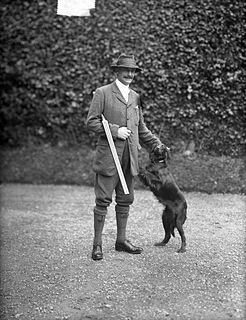
The Langrishe Baronetcy, of Knocktopher Abbey in the County of Kilkenny, is a title in the Baronetage of Ireland. It was created on 19 February 1777 for Sir Hercules Langrishe, who represented Knocktopher in the Irish House of Commons.
There have been six baronetcies created for persons with the surname Home, five in the Baronetage of Nova Scotia and one in the Baronetage of the United Kingdom. Only one creation is extant as of 2008.
The Hurly Baronetcy, of Knocklong in County Limerick, was a title in the Baronetage of Ireland. It was created circa 1645 for Thomas Hurly. The 3rd Baronet was attainted in 1691 for his part in the Williamite War in Ireland, and the baronetcy was forfeited.
The High Sheriff of Wicklow was the British Crown's judicial representative in County Wicklow, Ireland from Wicklow's formation in 1606 until 1922, when the office was abolished in the new Free State and replaced by the office of Wicklow County Sheriff. The sheriff had judicial, electoral, ceremonial and administrative functions and executed High Court Writs. In 1908, an Order in Council made the Lord-Lieutenant the Sovereign's prime representative in a county and reduced the High Sheriff's precedence. However the sheriff retained his responsibilities for the preservation of law and order in the county. The usual procedure for appointing the sheriff from 1660 onwards was that three persons were nominated at the beginning of each year from the county and the Lord Lieutenant then appointed his choice as High Sheriff for the remainder of the year. Often the other nominees were appointed as under-sheriffs. Sometimes a sheriff did not fulfil his entire term through death or other event and another sheriff was then appointed for the remainder of the year. The dates given hereunder are the dates of appointment. All addresses are in County Wicklow unless stated otherwise.
There have been two baronetcies created for persons with the surname Hume, one in the Baronetage of Nova Scotia and one in the Baronetage of Great Britain. One creation is dormant while the other is extinct.
There have been two baronetcies created for persons with the surname Drummond, both in the Baronetage of the United Kingdom. Both creations are extinct.
There have been two baronetcies created for persons with the surname Ellis, both in the Baronetage of the United Kingdom. Both creations are extinct.
